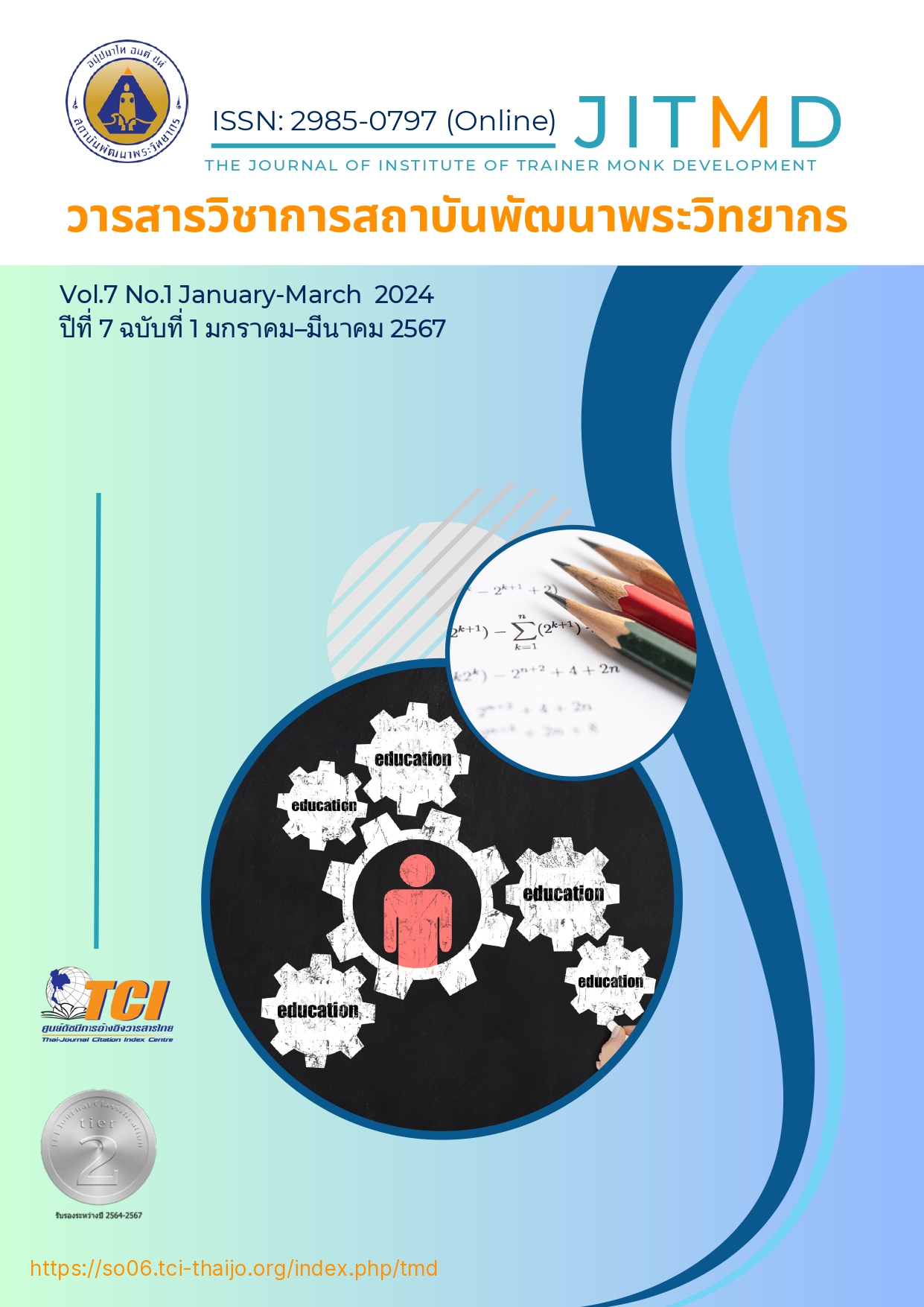The Desirable Characteristics Model of the Heads of Preschool Child Development Centers Under the Bangkok Metropolitan Administration with Sappurisadhamma Principles
Main Article Content
Abstract
The objectives of this research were (1) to study the priority needs for the desirable characteristics of the Heads of Preschool Child Development Centers in Bangkok Metropolitan Administration (BMA); (2) to develop and confirm the desirable characteristics of the Heads of Preschool Child Development Centers in BMA; and (3) to integrate the desirable characteristics of the Heads of Preschool Child Development Centers under the BMA with Sappurisadhamma 7 Principles. This research was a mixed methodology research between quantitative research and qualitative research. The sample in this research were Heads of the Preschool Child Development Center, Deputy Heads, Volunteers, mentors and parents, totally 297 people. The instrument used for data collection this study were a five-point rating scale questionnaire and in-depth interview from. Statistics used for data analysis consisted of frequency, percentage, mean, Standard Deviation, and Priority Needs Index Modified. Research results: (1) priority needs for the desirable characteristics of the Heads of Preschool Child Development Centers under the BMA, were namely intelligence, safety awareness, social attributes, personality traits, background and social characteristics, physical attributes and job-related characteristics respectively; (2) the development and confirmation of desirable characteristics of Heads of Preschool Child Development Centers under the BMA, It was found that the mean combined expected condition (I = 4.68) was greater than the mean combined current condition (D = 4.22) was 0.46 and had the total needs index 0.108 (PNImodified = 0.108); and (3) integration of the desirable characteristics of the Heads of Preschool Child Development Centers under BMA with the Sappurisadhamma 7 principles, it was found that the intelligence was consistent with Dhammaññutã, safety awareness was in line with Attaññutã, social characteristics and background and social characteristics were in line with Parisaññutã and Puggalaññutã, personality and physical attributes were consistent with Attañuta, and job-related characteristics was in line with Mattaññutã.
Article Details

This work is licensed under a Creative Commons Attribution-NonCommercial-NoDerivatives 4.0 International License.
บทความที่ได้รับการตีพิมพ์เป็นลิขสิทธิ์ของวารสารวิชาการสถาบันพัฒนาพระวิทยากร
ข้อความที่ปรากฎอยู่ในบทความที่ได้รับการตีพิมพ์ในวารสาร ถือเป็นความรับผิดชอบของผู้เขียนบทความ และข้อคิดเห็นนั้นไม่ถือว่าเป็นทัศนะและความรับผิดชอบของกองบรรณาธิการวารสารวิชาการสถาบันพัฒนาพระวิทยากร
References
Boonchuay Siriket et al. (2022). Sappurisadham 7 and organizational management. MCU Hariphunchai Journal. Periscope, (6)(2): 204-220.
Jerajaturapornkul, P. (2017). Guidelines for Education Development in Early Childhood Level of Child Development Center attach to Chiang Dao Sub–District Administration Organization to the Standards of the National Child. Master of Educational Administration Graduate Chaimai Rajabhat University. (In Thai).
Ministry of Education. (2018). Educational management of the Child Development Center. Bangkok: Ministry of Education. (In Thai)
Musaazi, J. C. S. (1982). The theory and practice of educational administration. Macmillan Nigeria Publishers, Limited.
Oplinger, J. et al. (2016). Making leaders: Leadership characteristics of makers and engineers in the maker community. American Journal of Engineering Education (AJEE), (7)(2): 65-82.
Phonsom, W. (2017). Desirable Characteristics of School Administrators According to Teachers' Attitude School Network for Educational Quality Development 1, under the Office of Educational Service Area Nakhon Ratchasima Primary Education Area 7. Bangkok: North Bangkok University.
Sribunruang, N. (2013). Characteristics of administrators of child development centers under sub-district administrative organizations. PhetchabunRajabhat Journal, (15)(2): 41-48. (In Thai).
Stogdill, R. M. (1950). Leadership membership and organization. Psychological Bulletin, (47)(1): 1–14.
Trewatha, R.L. & Newport, M.G. (2012). Management functions and behaviour. Dallas: Business publications. (In Thai).
Thai government gazette. (2019). Early Childhood Development Act B.E. 2562. Page 5. Volume 136. Section .56. ก 30 April 2019. (In Thai).
Yamane, T. (1973). Statistics: an introduction analysis. New York: Harper & Row.
Yukl, G., & Michel, J. W. (2006). Proactive influence tactics and leader member exchange. Journal of Power and influence in organizations, (5)(2): 87-103.


